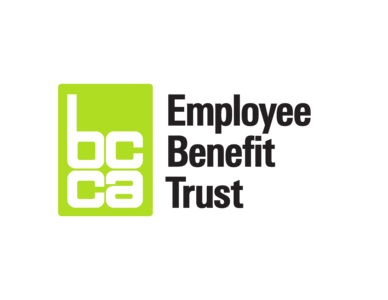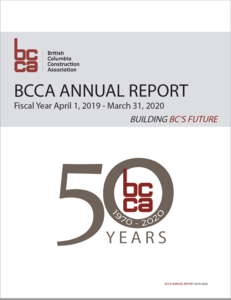- Home
- /
- Resources
- /
- Latest News
Construction File: Use of Standard Documents Reduces Risks
When documents contain clauses that discourage contractors from bidding, raise the costs associated with bidding, add onerous risk, or limit the competition to a select few bidders, it may come at a cost to the owner. Such an outcome creates the potential for unfairness or misuse of public funds.
Quality construction depends on quality contracts, so we must work together to ensure that the proper standards are adhered to by all—not just in the construction of the project, but also in the construction of the project documents. Standard construction document conditions generally limit the risks of the contractor to those, which can be reasonably foreseen by an experienced and competent contractor. Such risks would include compliance with regulations; construction defects; sub contractor/supplier mistakes; completion dates; and labour and materials issues.
Often the contractor is asked to take on additional risks, and the bid price could be inflated to reflect these risks. Care must be taken not to accept or impose such risks indiscriminately. Inappropriate allocation might simply result in no allocation at all.
Proper allocation of risk is essential in all contractual relations. In the private sector, it is primarily the business of those parties who are signatory to the contract documents. It is assumed that such parties are operating on an even playing field, and therefore must accept or refuse risk as they see fit. With public construction, however, there is more at stake. Public agencies are expected to operate in a fair, accountable and transparent manner. It is in the public’s best interests that unnecessary litigation is avoided, and that risk is dealt with in such a manner as will best protect the public.
Using well-established industry standards when preparing construction documents will mean that those very contractors and trade contractors you wish to attract as bidders will continue to be interested in bidding.
Using Standard Document approved by the Canadian Construction Documents Committee (CCDC) or Canadian Construction Association provides:
- A fair allocation of risk
- Clarity of obligations
- Responsibilities acceptable to all parties
The use of standard documents results in:
- Fewer disputes
- Fewer delays
- Reduction in the cost associated with drafting, implementing and bidding on projects
with new contracts
There are industry accepted standard contracts such as the CCDC-2 that provide a balanced approach to risk allocation. We recommend the use of such standard documents. They have been expertly developed by industry in consultation with other stakeholders, including owners (4 representatives), design professionals (7 representatives), and contractors (4 representatives). Consequently, the documents provisions for risk management are appropriate and equitable.
For information on standard documents and industry standards refer to ‘A Summary Guide for BC Construction Industry Standards and Guidelines’ on the BCCA website.
Note: Standard document development is supported by the funds generated from the sales of these documents. Hence, it is in the industries best interest to ensure that any standard documents comply with the copyright requirements of the sponsoring organization.
.jpg)
BC Construction Association Contracts Fairley Strategies to Advise on Industry Advocacy Efforts Regarding Construction Procurement
.png)
BCCA Statement Regarding Compulsory Trades

Construction Workers Get Fast-Tracked for Covid Vaccine in Vancouver

BC Hydro and Site C Contractors Launch Canada's First Builders Code Work Site

Four British Columbians Recognized for Extraordinary Safety Leadership During Pandemic
.jpg)
Construction File - Building Back Smarter:

Latest Construction Industry Statistics Reveal Strength Despite Pandemic Challenges
.png)
BCCA Response to BC Budget 2021
.jpg)
BCCA Wins National Award for Second Consecutive Year

BC Restaurants to Benefit From Construction Month Celebrations This April

Christy Kerr of Kerr Controls Inc. To Chair BCCA Employee Benefit Trust Board of Trustees


Letters to the Vancouver Sun: Legislate Prompt Payments for the Construction Industry

Builders Code Champion Awards Celebrate Culture Change In BC’s Construction Industry

BC Construction Association Announces New Board Chair

BCCA Releases it's 2020 Annual Report
BCCA to hold 2020 Annual General Meeting (AGM) Virtually
-01.png)
BC Construction Association Recognized for Achievements in Workforce Development with National Award

BC Construction Sector Awards to Recognize Workplace Diversity

Construction Sector United in Fight Against COVID-19
 (banner-large)-01.png)
Construction Culture Training Goes Virtual During Covid-19 Crisis

BCCA President, Chris Atchison Speaks to Global News About Safety Being the Most Urgent Priority on Construction Sites

BCCA Signs Agreement with eSolutionsGroup to Power BidCentral Platform
Business, Indigenous, and Community Leaders Call for a Return to Order
BCCA Responds to BC Government & Wet’suwet’en Leaders Agreement

BCCA Statement regarding COVID-19 coronavirus
BuildForce Canada 2020 Construction & Maintenance Looking Forward Report

Inaugural Builders Code Champion Awards Celebrate Construction Sector Leadership

BCCA Celebrates National Construction Day with New Worksite Behavior Training App

Fall 2019 Statistics Show Progress on Key Construction Sector Indicators
BCCA to hold 2019 Annual General Meeting in Prince George

BCCA Welcomes Trans Mountain Announcement Resuming Work on Pipeline Expansion Project

Builders Code Ramps Up Services Across Northern Region
Court ruling allows construction industry stakeholder coalition to proceed through the B.C. Supreme Court with CBA challenge
Aligning the Construction and Technology Sectors
Multibillion Dollar BC Construction Sector Untapped by Tech
BCCA Commends Ruling in Favour of Trans Mountain Pipeline Project
BCCA Update on Private Members Bill for Prompt Payment
BCCA Response to Proposed Labour Code and Employment Standards Legislation

New Builders Code Training Program Gives Construction Leaders the Tools to Address Worksite Harassment, Hazing and Bullying

Six BC Employers Win Construction Leadership Awards
CBC Interview: Builders Code "Don' t Be A Tool" campaign
CHNL Interview: Construction Month 2019

BC Construction Month Launches with Latest Industry Statistics and Results of Province-Wide Industry Survey

Builders Code Expansion: First Advisor Now Available to Vancouver Island Construction Employers

BC Construction Industry Introduces Worksite Conduct Standards to Improve Worker Retention
Risk Alerts Issued for Two Provincial Construction Projects
Contractor Alert - Westwood Court Prime Contractor Services
Contractor Alert - Hart Haven Group Home at Dagg Rd

Supporting BC's Skilled Workforce

British Columbia Construction Association Selected to Provide Pre-Arrival Services

A Dynamic Year In BC’s Construction Industry – Skilled Workforce Shortage Still The #1 Issue

Kinetic Construction Courts Young Hockey Players in Bid to Draw More Youth to Career Opportunities in the Trades

Angela McKerlich of CapriCMW Insurance Services Ltd. Elected BC Construction Association Board Chair

LNG CANADA Invests in BC and Canada: A Generational Milestone Achieved

BC 2018 Labour Market Outlook Released
.png)
BCCA Integrated Membership Update 2017

Response to Federal Court of Appeal's Trans Mountain Pipeline Decision
.jpg)
New BC Building and Plumbing Code 2018

Industry Policies that further validate BCCA’s challenge of the Community Benefits Agreement

Industry Voices - Industry Must Come Together
.png)
BCCA does not support Premier Horgan’s new Community Benefits Agreement

Pattullo Procurement Strategy Takes BC Construction a Bridge Too Far
.png)
B.C. needs Ministry of the Built Environment to manage construction issues

Response to the Province’s Community Benefits Agreement Announcement
.png)
Tackling the Late Payment Epidemic: What Will It Take?

Construction Month in BC 2018 Recap Video #BuiltRight

Understanding Risk British Columbia (UR+ BC) Video #URBC

BCCA Response to Federal Purchase of Trans Mountain pipeline for $4.5 Billion

Dodge Momentum Index Moves Higher in April

BC Lions Announce "Salute the Trades" Game Night September 7

LNG Canada and TransCanada's Coastal GasLink Project Announce Expansion of "Connect" Program
.jpg)
.PNG)